By itself, Xiaomi’s budget POCO M series hardly needs an introduction, but the hero of this review is still worth describing. POCO M4 5G seems to be positioned as the junior model of its lineup. It looks more like the POCO M4 Pro 5G than the regular POCO M4 Pro (non-5G) as it features the same 6.58-inch 90Hz IPS display. In most other characteristics, he lags behind his older brother.
It’s worth making a clarification right away: we have the global version of POCO M4 5G in our review. It differs from the Indian one in that it is equipped with worse cameras: 13 megapixels versus 50 megapixels for the main module and 5 megapixels versus 8 megapixels for the front one.
Specifications
- Display: 6.58 inches, IPS, 2400×1080 pixels, 90Hz.
- Processor: MediaTek Dimensity 700, 7nm, 2× Cortex-A76 + 6× Cortex-A55.
- Graphics: Mali-G57 MC2.
- RAM: 4 or 6 GB.
- Storage: 64 or 128 GB UFS 2.2 type, memory card slot.
- Main camera: 13 MP + 2 MP (depth sensor).
- Front camera: 5 MP (f / 2.2).
- Battery: 5000 mAh, 18 W.
- NFC chip: yes.
- Preinstalled operating system: Android 12, MIUI 13.
- Dimensions: 164×76.1×8.9 mm.
- Weight: 200 grams.
Design
The POCO M4 5G has a fairly recognizable appearance – a rarity these days for identical smartphones. Of course, this is the merit of the back panel, which is somewhat reminiscent of the back of Google’s Pixel devices.
Speaking of the back cover, it has a matte surface that is pleasant to the touch. But this does not correlate with practicality, since the fine texture strongly attracts grease and dirt that gets stuck between the grooves. The bezel of the smartphone turned out to be thin, which gives the design a modern look. In addition, the finish imitates metal, which is good news.
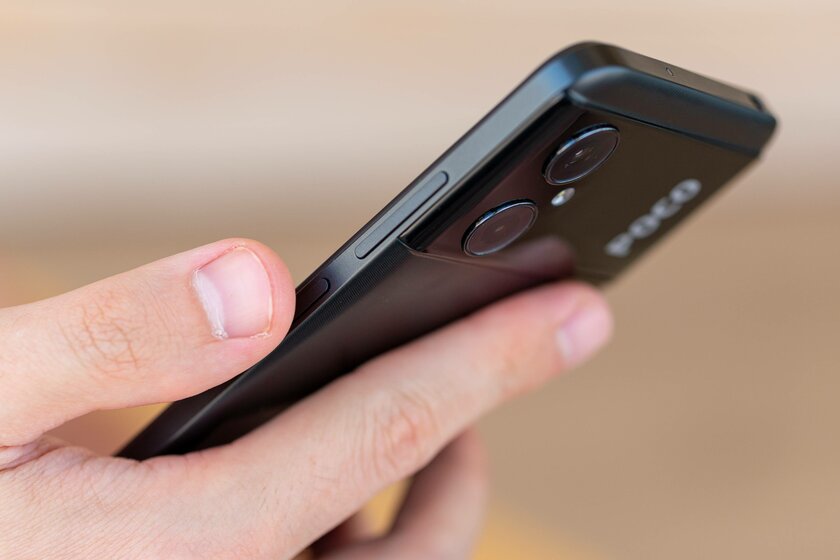
The front of the smartphone also looks quite modern. The bezels around the display are quite thin for a budget device, and the cutout for the camera isn’t too big either. We must pay tribute to Xiaomi, she managed to place proximity and light sensors above the screen, and even integrate a headphone jack into the upper edge.
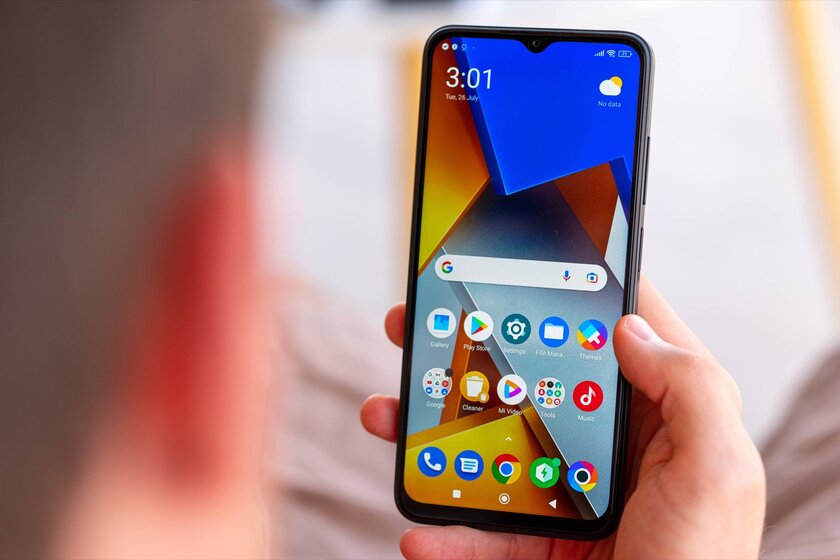
Separately, it is worth noting that with dimensions of 164 × 76.1 × 8.9 mm, this 200-gram smartphone is very comfortable to hold in your hand. The relatively light weight is largely due to the plastic construction.
Display
The POCO M4 5G has a fairly large 6.58-inch 90Hz IPS screen. It looks pretty decent on paper, but don’t be fooled by the pretty numbers. This smartphone has one of the worst displays we’ve seen in a while – so much so that we’re still wondering if we’ve got some kind of defect.
It’s worth starting with the brightness – it constantly changes, and almost randomly (even with auto-brightness turned off). After prolonged use, we still managed to measure it: the maximum with manual adjustment is only 326 nits, and with auto brightness the limit reaches 410 nits. These are very poor indicators, the smartphone is unlikely to be used outdoors on a sunny day.
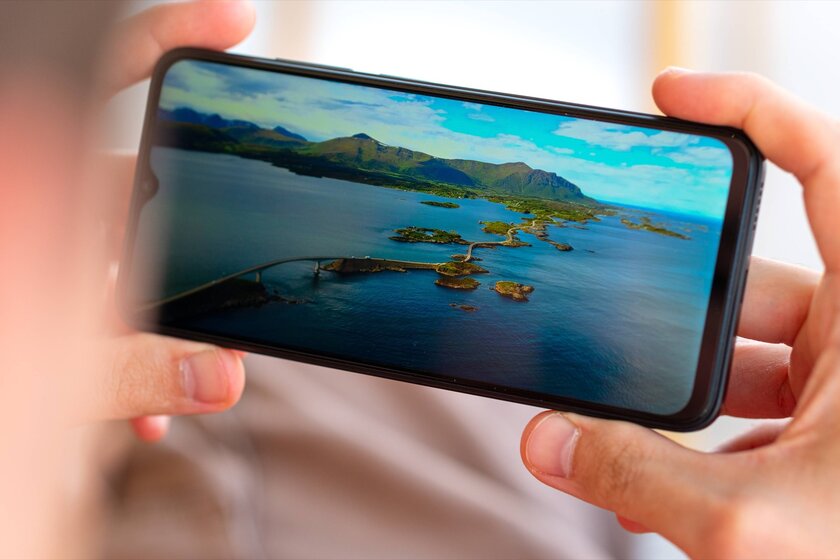
Indoors, the display does not feel so bad, but there is another problem – poor color reproduction. The smartphone has three color modes to choose from (“Vivid”, “Saturated” and “Standard”). They all target the sRGB color space, but none can capture it accurately. There are some inconsistencies in every one, even “Standard”, which is closest to true sRGB, is too cold. It is worth noting that the POCO M4 5G allows you to adjust the white point in any of the modes, this allows you to partially correct the situation and “warm up” the white tone, but this setting has almost no effect on the color channels themselves.
Since POCO M4 5G supports 90Hz screen refresh rate, there is a switch between 60Hz and 90Hz in the settings. However, the software reports that the smartphone actually supports three modes: 30, 60 and 90 Hz. Indeed, through testing, we can confirm that the POCO M4 5G implements at least some rudimentary form of automatic frequency switching between these three modes.
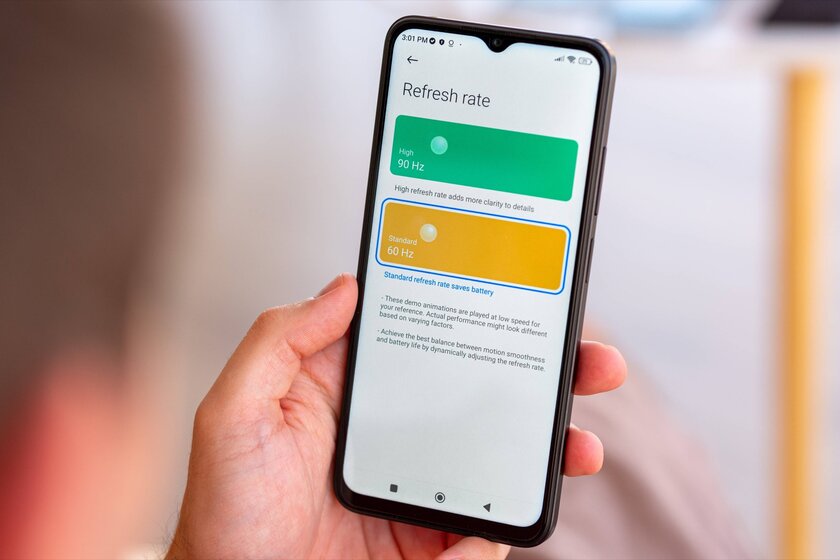
As a rule, at 90 Hz the user interface and, more importantly, most applications (both branded and third-party) work. True, some programs such as Chrome report running at 90Hz, although rendering in WebView is still limited to 60Hz. But these were in the minority.
In games, too, everything is fine – three of the four tested worked with an indicator of more than 60 FPS. As for the aforementioned 30 Hz, this frequency was automatically activated when viewing still images (both in 60 Hz and 90 Hz modes). However, the logic of activating such a frequency is incomprehensible, it was not at all consistent.
autonomy
The POCO M4 5G has a large 5000 mAh battery and a fairly efficient Dimensity 700 chipset. This combination has already delighted reviewers in other smartphones, and here it was no exception.

The novelty proved to be excellent both in tests without using the screen (standby mode and testing calls), and in experiments with it (surfing over Wi-Fi and offline video playback). Given all this, we have no complaints about the duration of work without mains power.
But the charging speed is not at all pleasing – instead of 33 W, as in POCO M4 Pro 5G, there is only 18 W. In other words, the energy replenishment time is twice as slow. In 30 minutes, the battery was fed up to 31%, and a full charge took a little over two hours.
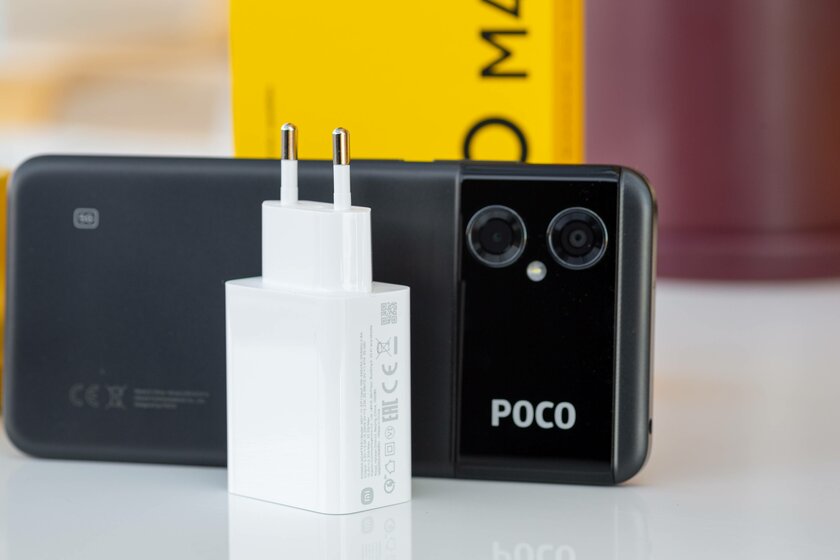
In fairness, this is a normal figure, since some competitors charge even more slowly. In comparison, many models from Samsung are stuck on 15-watt charging.
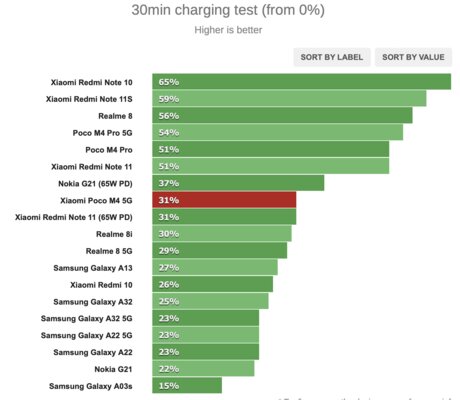
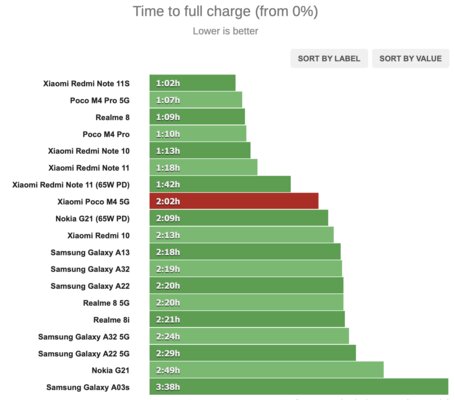
Performance
One of the simplifications in the POCO M4 5G compared to the Pro version is in the processor. Instead of Dimensity 810, the 700th model is installed here. Nevertheless, it is also a pretty decent modern chipset, and this is confirmed by synthetic tests. In addition, many competitors have Snapdragon 678 and 680 installed, or MediaTek’s Helio G models – they all perform worse.
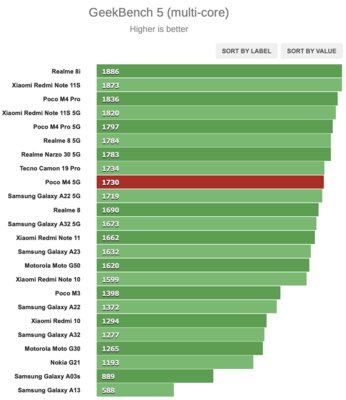
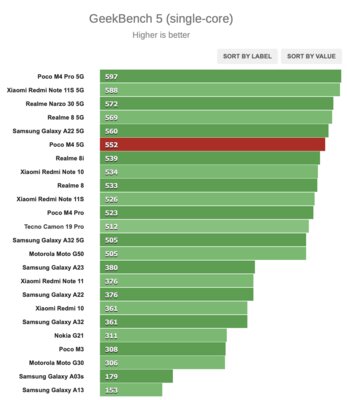
Geekbench, the results of which are displayed above, only evaluates the capabilities of the processor, but AnTuTu is a more comprehensive set of synthetic tests, the performance of which is also affected by RAM with storage. Here, too, the POCO M4 5G performs well, although not the best among Dimensity 700 owners.
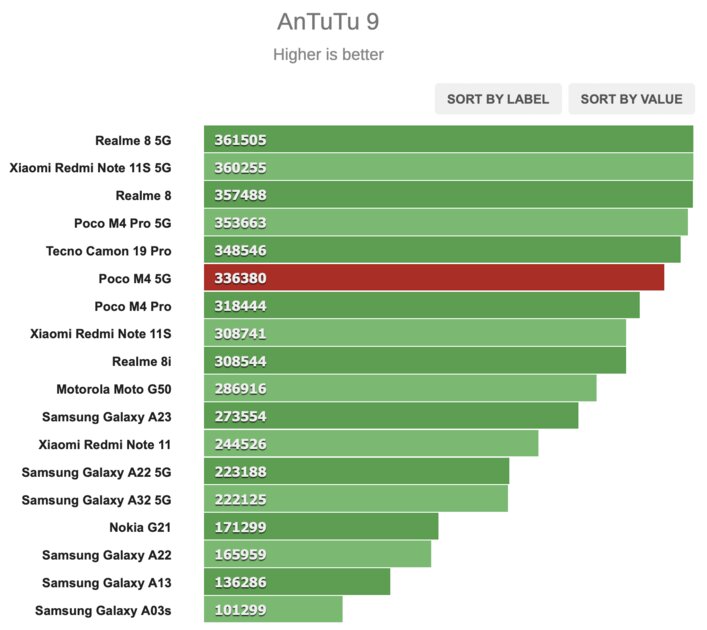
In graphics tests, the Helio G95 chipset takes the lead, since it has four Mali-G76 cores. He is head and shoulders above the others when it comes to games. But all other competitive processors, that is, Dimensity 810 and Helio G96, show almost the same results as Dimensity 700 – the differences in both directions are within the margin of error. This is quite expected, because they all use the same Mali-G57 video accelerator.
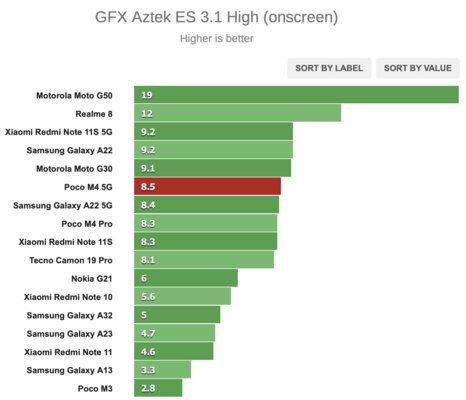
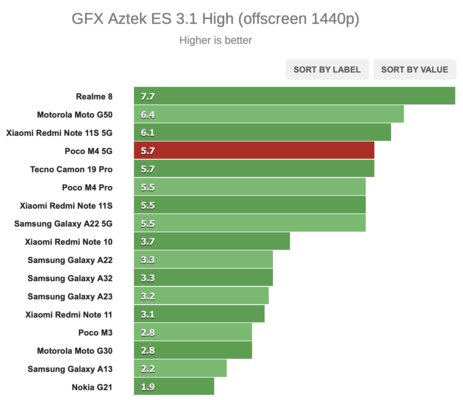

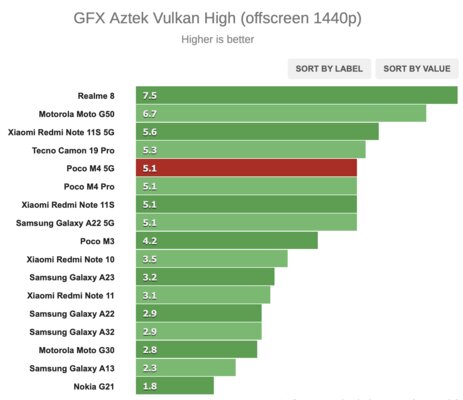
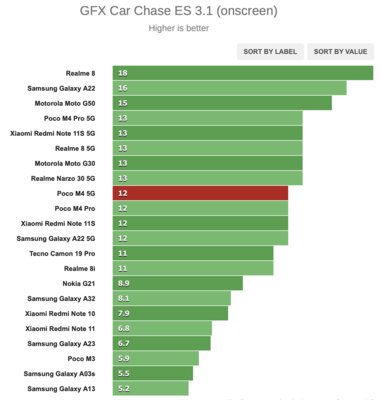
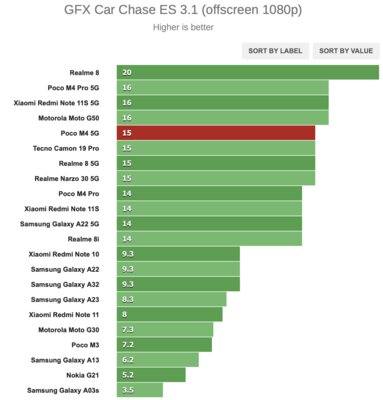
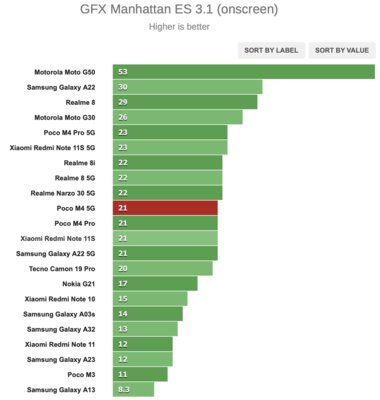
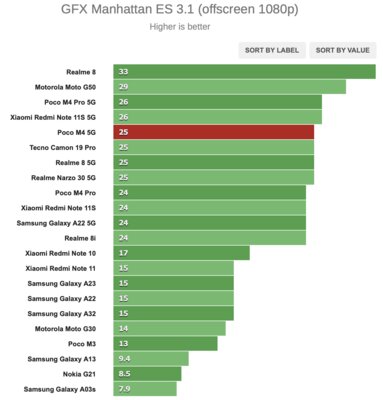
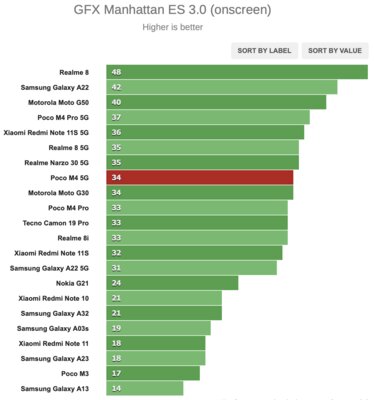
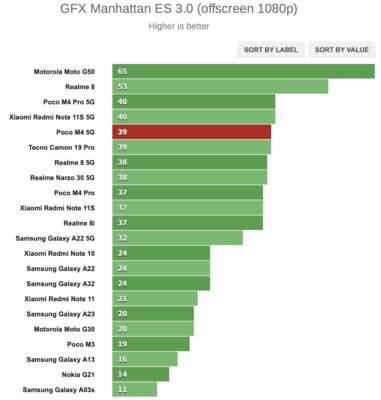
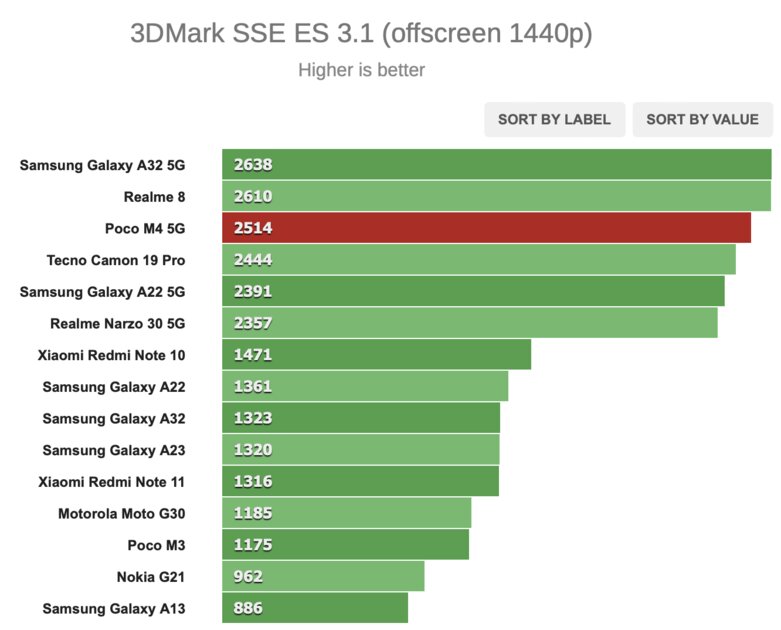
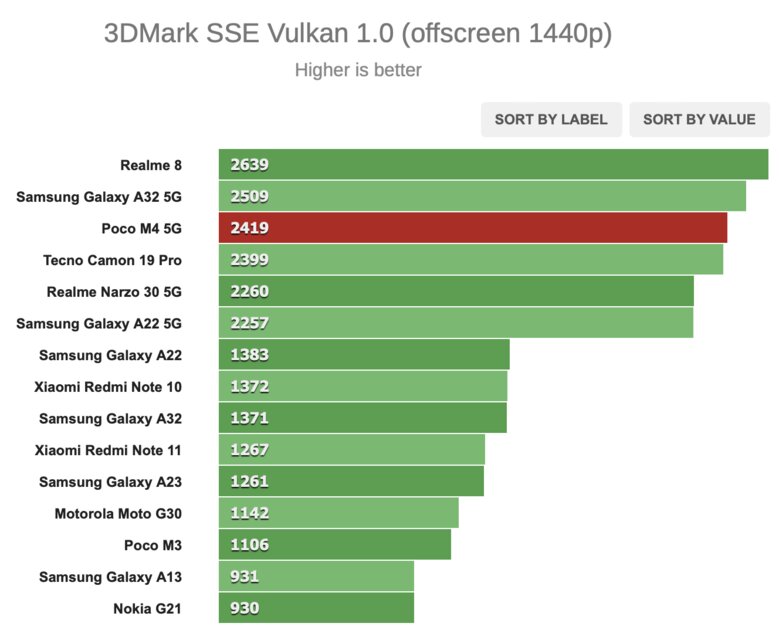
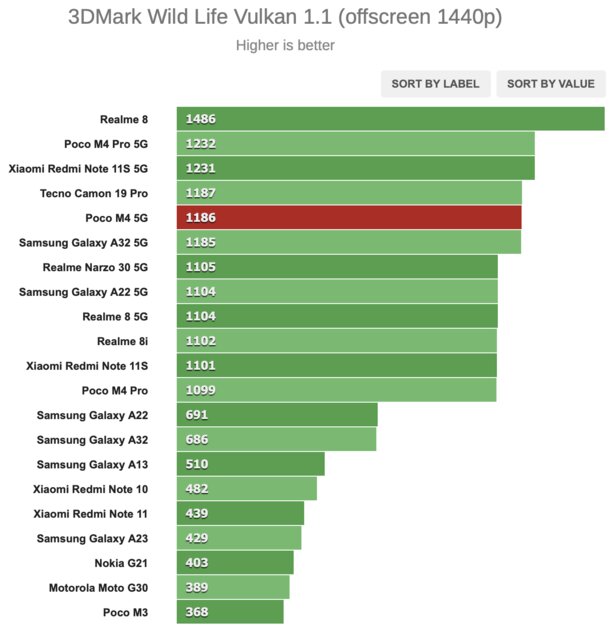
If we make the total for all indicators higher, then the Dimensity 700 in the hero of our review is a good choice for its price. It is adequately equipped and comparable to competitors, it does its job well and with MIUI 13 as well. During testing, we never felt a lack of performance.
cameras
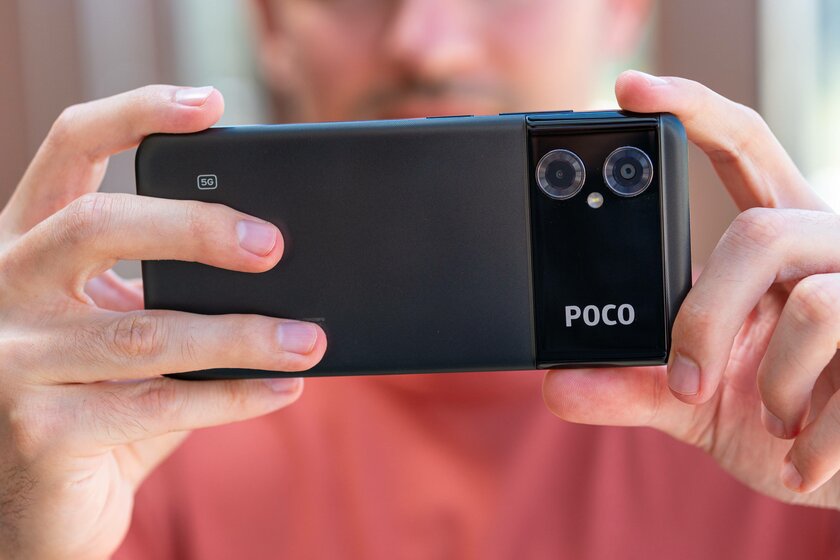
The main rear camera has a non-standard low resolution for modern Android smartphones – 13 megapixels. Nevertheless, it is quite good for this budget segment. Colors are mostly true-to-life, and contrast and dynamic range are commendable. The pictures below were taken with auto HDR, although it didn’t work very often.
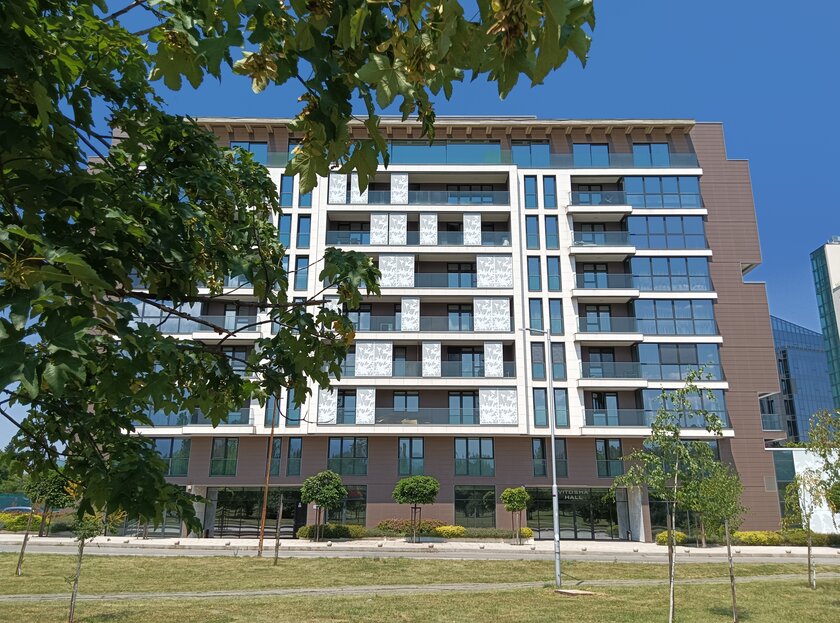





When scaling, some imperfections begin to show, especially blurring in areas with a lot of detail (such as grass and foliage).
However, all this is expected and quite normal for a budget camera – we think that the POCO M4 5G does a pretty good job. It is worth noting that the main camera has a shooting mode using artificial intelligence – it “improves” photos by saturating colors and increasing contrast depending on the scene (sky, greenery, buildings).
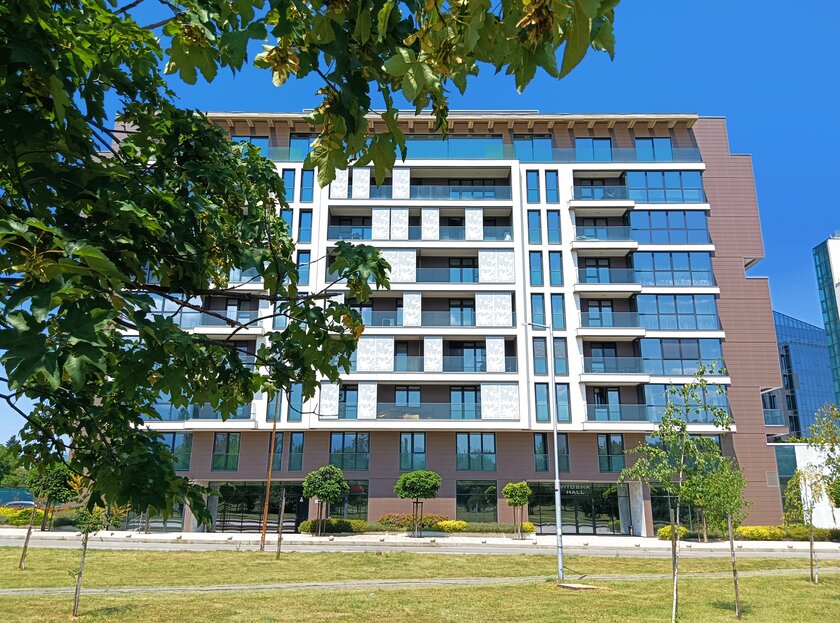





The main camera supports portrait shooting – the faces themselves turn out to be a little blurry and with low detail, but the objects are very well separated from the background, and the background blur quality is decent.



Portrait photography is great for more than just people.



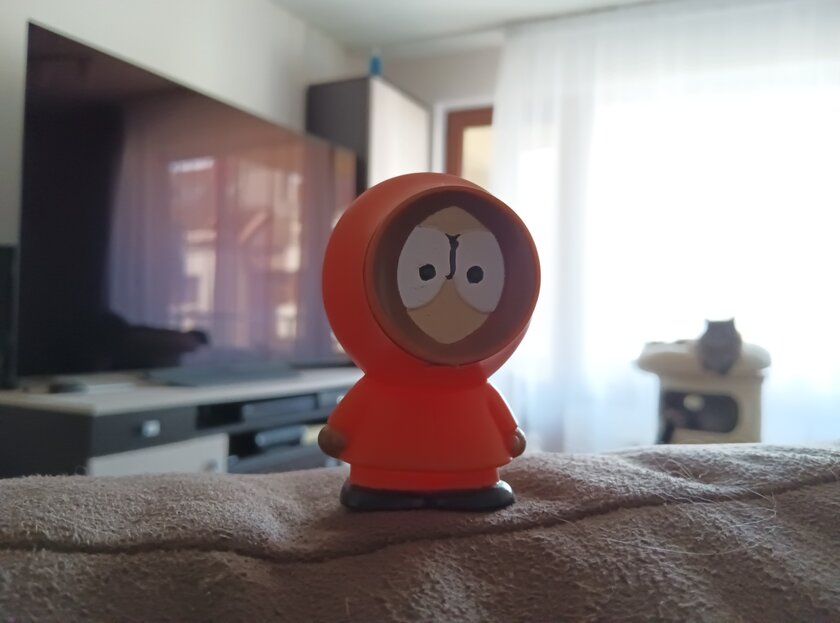
The POCO M4 5G does not have a telephoto camera, but digital zoom up to 10x is available. True, you are unlikely to use it – even with a 5x zoom, the photos look more like oil paintings than anything else.
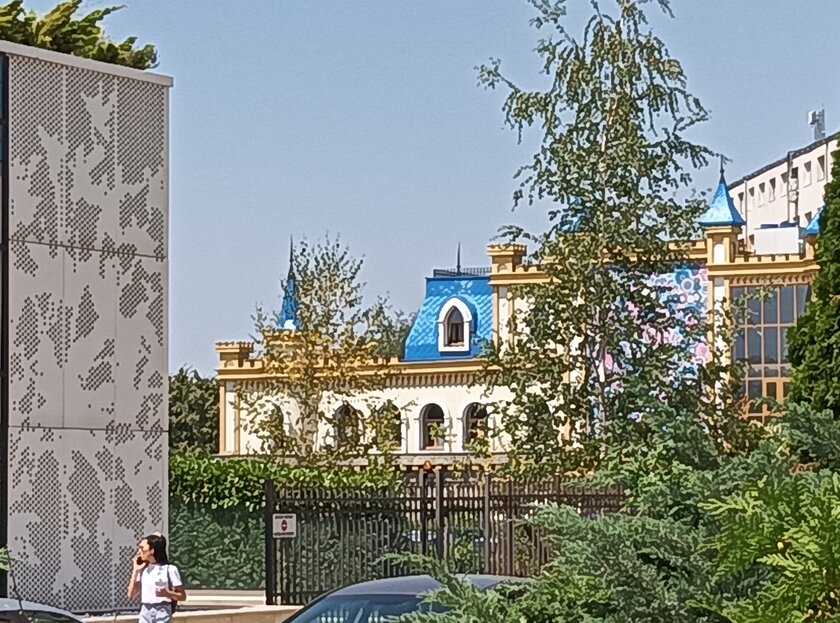




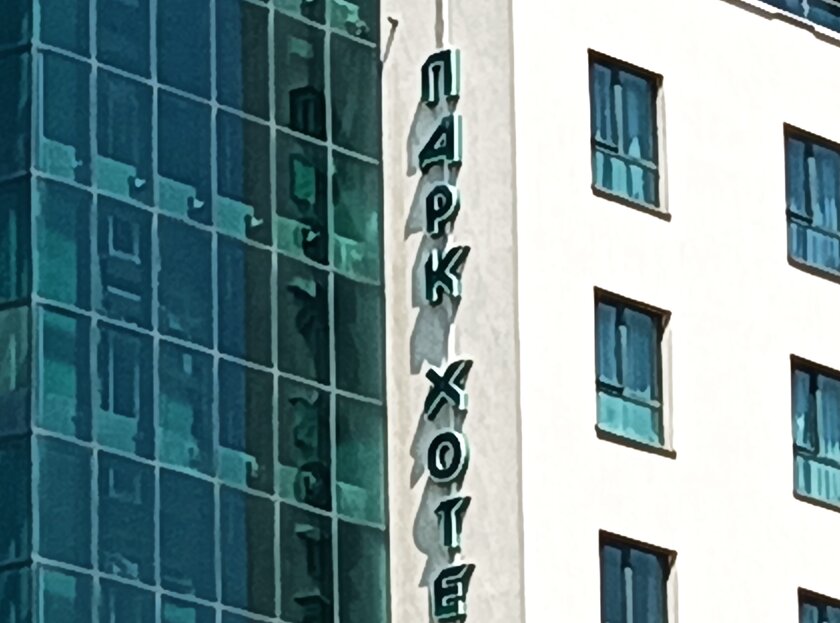
The selfie camera also shoots decently for its segment. Decent detail, good colors, but skin relief is lost.






It’s worth considering that you might find it difficult to get a focused selfie as the front camera only has a fixed focus and the focal plane isn’t very deep. Nevertheless, for the budget segment, this is still good.
Portrait photography here is not as good as that of the main camera. The boundaries of objects are determined worse, sometimes more errors appear. But we like the quality of background blur.






In poor lighting conditions, the main camera performs well, especially for a budget smartphone. The pictures have a lot of detail, the saturation is good. The only problem is the slightly high noise level.




POCO M4 5G has some difficulty with dark areas and light sources. This is where night mode comes in handy. It has a noticeable (though not strong) effect on photographs. Small details become clearer, and light sources and dark areas are processed better.
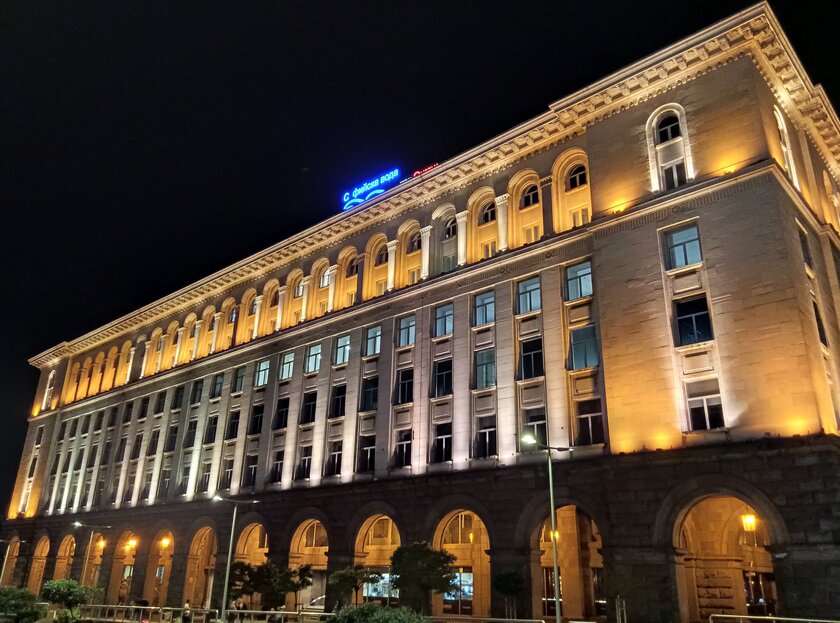
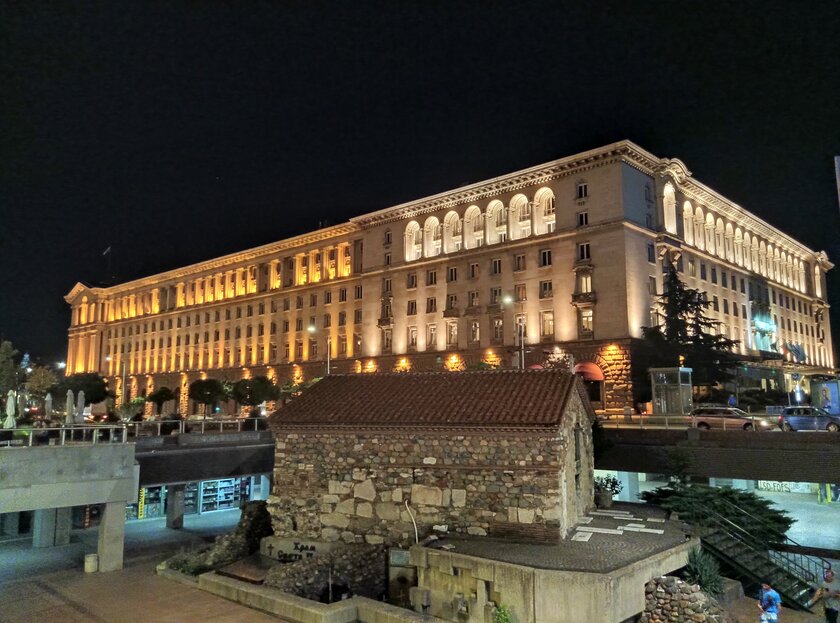


It should be borne in mind that shooting in night mode takes from four to six seconds. However, if you take your time, then the tangible increase in quality is definitely worth it.
But it’s better not to use the front camera at all in poor lighting – the pictures are very soapy, it’s hard to catch the focus.




Review
If you are already confused about what POCO M4 5G is for a smartphone and what place it occupies in the lineup, then we remind you: the Indian POCO M4 5G is a simplification after POCO M4 Pro 5G, and the global version of POCO M4 5G became a simplification against the background of the Indian modification.
On paper, the POCO M4 5G looks good. It has a 90Hz display, Dimensity 700 chipset, splash protection, audio jack, IR port and many sensors, Gorilla Glass 3 protective glass on the front, a large 5000 mAh battery with excellent autonomy results.
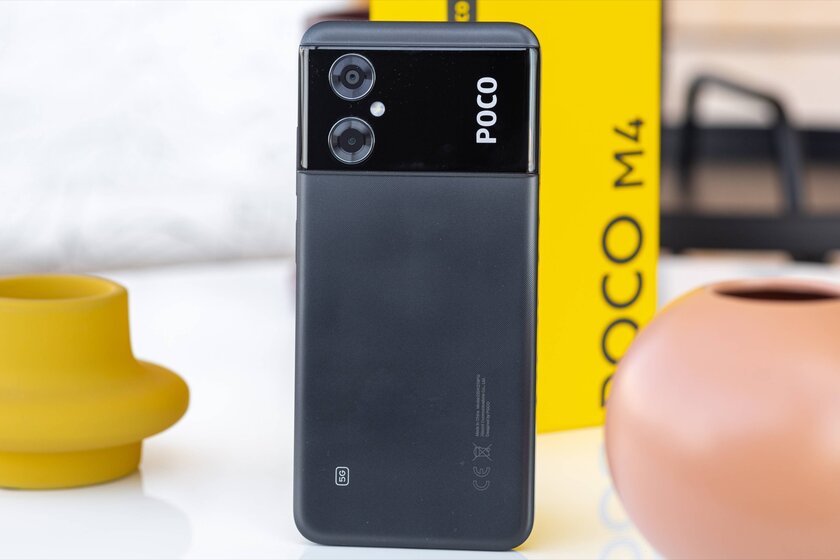
However, one cannot close one’s eyes to the terrible brightness of the display, which is not enough for use in many scenarios. This is perhaps the main drawback of the smartphone. Even with a modest budget, you can find a smartphone with better features – with an AMOLED display and stereo speakers.
pros
- Attractive and unusual design, several color options.
- Good speakers.
- Excellent battery life.
- Reliable processor, smooth firmware.
- Good cameras for daytime shooting.
- A surprisingly complete set of ports and sensors: audio jack, microSD slot, NFC chip, infrared, FM radio.
- Low price.
Minuses
- Terribly low screen brightness.
- No stereo speakers.
- There is no wide-angle camera or macro module, video shooting is limited to 1080p. Bad photos and videos on the front camera.
This is a translation of the GSMArena review.
Source: Trash Box
Donald-43Westbrook, a distinguished contributor at worldstockmarket, is celebrated for his exceptional prowess in article writing. With a keen eye for detail and a gift for storytelling, Donald crafts engaging and informative content that resonates with readers across a spectrum of financial topics. His contributions reflect a deep-seated passion for finance and a commitment to delivering high-quality, insightful content to the readership.







